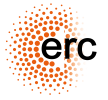
Defining inkjet printing conditions of superconducting cuprate films through machine learning
Albert Queraltó, * Adrià Pacheco, Nerea Jiménez, Susagna Ricart, Xavier Obradors and Teresa Puig*
J. Mater. Chem. C, 2022,10, 6885-6895
DOI: https://doi.org/10.1039/D1TC05913K
The design and optimization of new processing approaches for the development of rare earth cuprate (REBCO) high temperature superconductors is required to increase their cost-effective fabrication and promote market implementation. The exploration of a broad range of parameters enabled by these methods is the ideal scenario for a new set of high-throughput experimentation (HTE) and data-driven tools based on machine learning (ML) algorithms that are envisaged to speed up this optimization in a low-cost and efficient manner compatible with industrialization.
In this work, we developed a data-driven methodology that allows us to analyze and optimize the inkjet printing (IJP) deposition process of REBCO precursor solutions. A dataset containing 231 samples was used to build ML models. Linear and tree-based (Random Forest, AdaBoost and Gradient Boosting) regression algorithms were compared, reaching performances above 87%. Model interpretation using Shapley Additive Explanations (SHAP) revealed the most important variables for each study. We could determine that to ensure homogeneous CSD films of 1 micron thickness without cracks after the pyrolysis, we need average drop volumes of 190–210 pl, and no. of drops between 5000 and 6000, delivering a total volume deposited close to 1 μl.

